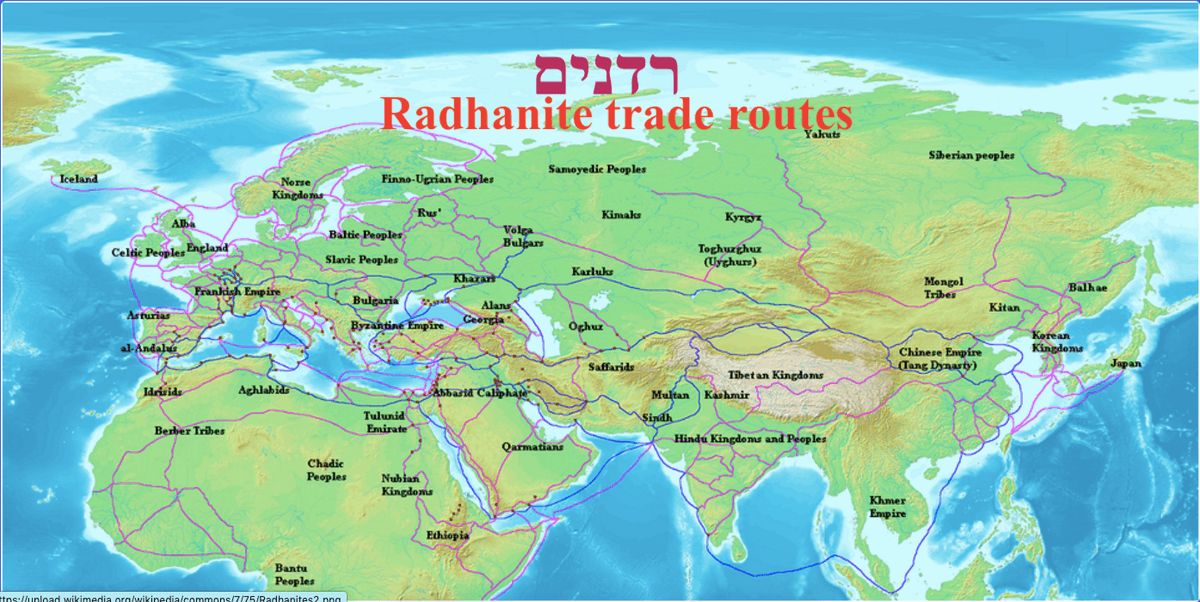
The Radhanites
In Woven Roots, we mention the fabled and fabulous Radhanites, a community of globe-trotting Jewish traders mentioned in the Arabic geographer Ibn Khordadbeh's 9th-century (CE) survey Kitāb al-masālik wa al-mamālik (The Book of Routes and Realms). According to Ibn Khordadbeh, the Radhanites (known in Arabic as "Ar-Raḏaniyya" and in Hebrew as "Radhanīm," traveled from west to east and from east to west, both by sea and by land, trafficking in silks, beavers, furs and other entities from the west, and from the east bringing musk, aloe, camphor, cinnamon, and other spices. Their trading routes ran from western Europe (France and Italy) by sea to Suez, and then through the Red Sea and the Indian Ocean; they also traveled across the Mediterranean to Antioch, and from there overland along the Tigris and Euphrates to Baghdad, and from there down to the Persian Gulf and out to sea again. And if this seven-league booterie weren't enough, they would also travel further west, across France and Spain and across the Strait of Gibraltar to Morocco, specifically Tanger, and from there overland across the Maghreb to Cairo, continuing through Iraq and onward to China.
But the most interesting trading route (from our point of view), led them from Rome into Eastern Europe, to the Slavic, Khazar, and Tatar lands, across the Caspian sea and across Central Asia, onward to China. We can see traces of a continuous and continual sharing of plants from the various corners of the globe, with diasporic communities ranging from Jews and Tatars, Greeks, Armenians, and others, bringing plants to the smallest hamlets and villages of Eastern Europe. A thousand years later, New World plants such as sarsaparilla, quinine, and cinchona were carted off ships that docked at ports such Danzig and Odessa; native plants of South, Southeast, and East Asia, such as cardamom, ginger, nutmeg, ginseng, and cinnamon, were available in the majdans of Tartary (Kazan, Astrakhan) as well as the market towns of Podolia, Volhynia, Galicia, and Polesia in what are now Ukraine, Belarus, and Poland.
Clearly, even the humblest communities and settlements of Eastern Europe (and Central and Southeastern Europe) were able to develop materiae medicae that included not only locally grown and foraged healing plants, but also the most farflung and "exotic," not only as occasional remedies, but as standard ingredients in the most fundamental formulations, such as the postpartum recovery infusion known as trianke, trianka, troyanka, or zapiekanka.
